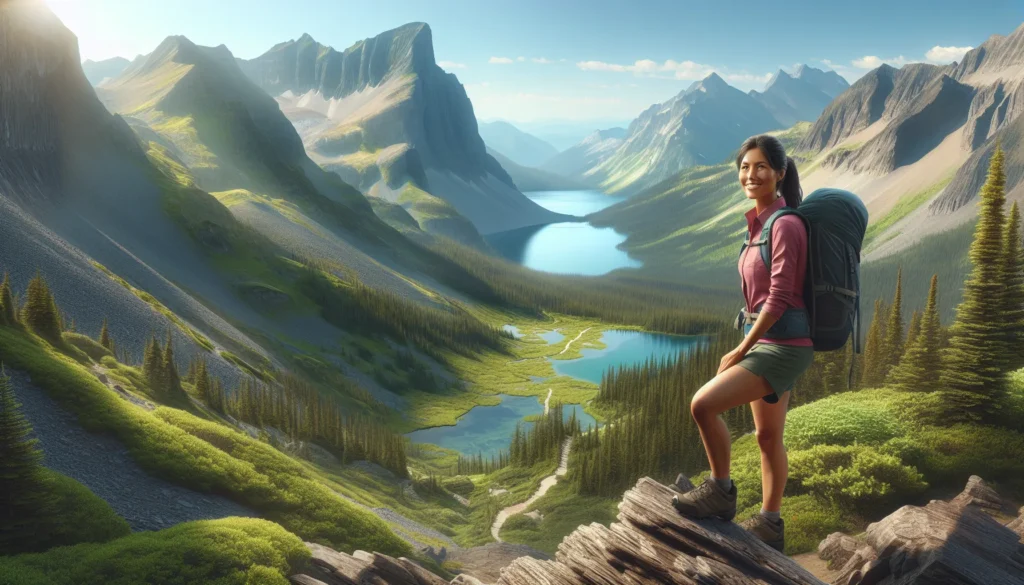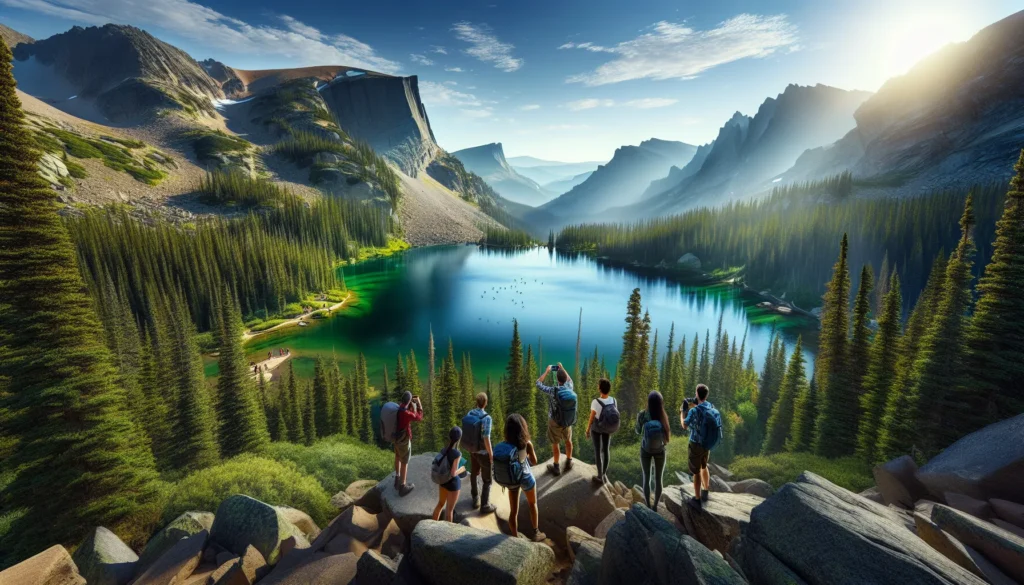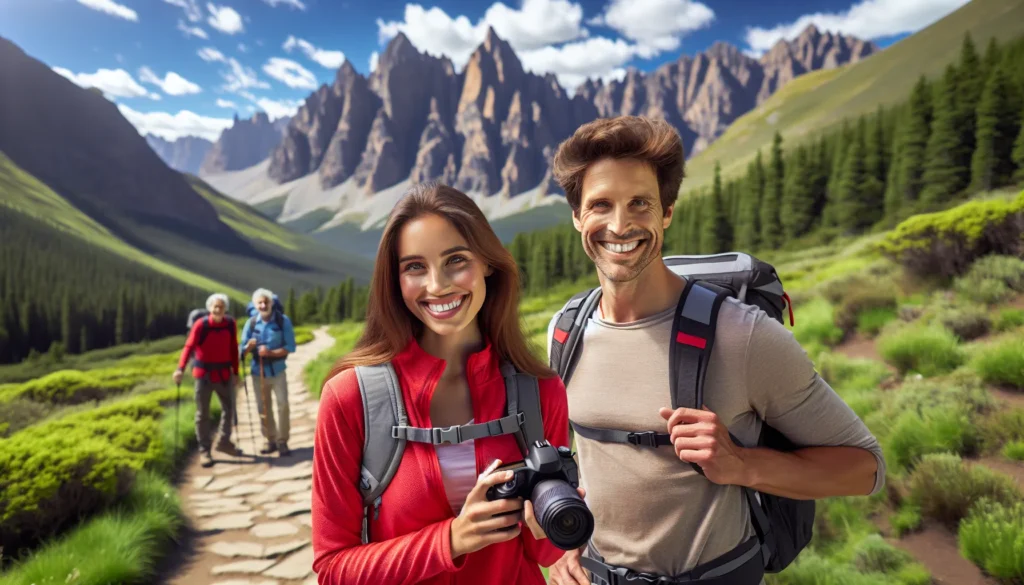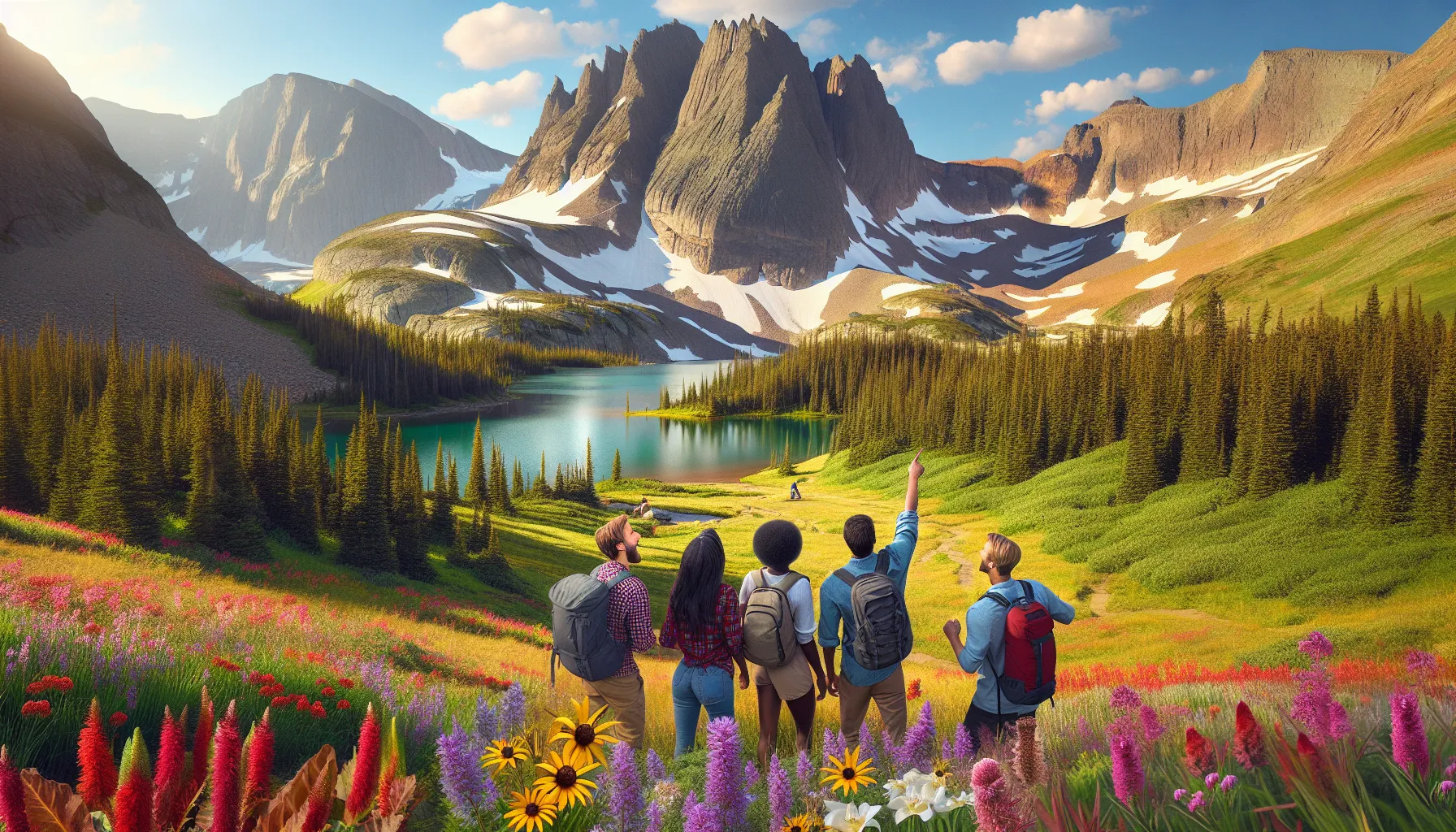Key Takeaways
- The Rocky Mountains offer hiking trails for all skill levels, from beginner-friendly paths like Bear Lake Loop to challenging routes like Longs Peak’s Keyhole Route.
- Iconic trails such as Emerald Lake Trail, Grinnell Glacier Trail, and Sky Pond Trail provide breathtaking scenery, including alpine lakes, glaciers, and towering peaks.
- Seasonal and weather conditions significantly influence trail accessibility, safety, and gear requirements, with summer being the most favorable season for hiking.
- Factors like trail difficulty, length, duration, scenic landmarks, and personal goals are key considerations when choosing the best hiking trail in the Rockies.
- Wildlife encounters, such as elk, mountain goats, and black bears, add to the unique experience of hiking in the Rockies, particularly during early morning hikes.
- The best hiking trail is subjective and depends on individual preferences for scenery, difficulty, accessibility, and activities like photography or wildlife spotting.
Hiking in the Rockies feels like stepping into a postcard. Towering peaks, crystal-clear lakes, and endless alpine meadows make it a dream destination for outdoor lovers like me. But with so many incredible trails, picking the best one can feel overwhelming.
Exploring The Rockies: A Hiker’s Paradise
The Rockies offer diverse trails suited for beginners, experienced hikers, and everyone in between. Iconic paths like Emerald Lake Trail, Grinnell Glacier Trail, and Sky Pond Trail showcase pristine landscapes, towering peaks, and cascading waterfalls. Each route provides unique vistas that highlight the region’s natural beauty.
Altitude plays a defining role in the hiking experience. Trails like Longs Peak’s Keyhole Route, at over 14,000 feet, challenge physical stamina while rewarding hikers with unparalleled panoramic views. For those seeking a less demanding trek, Bear Lake Loop is a top choice, featuring a gentle, family-friendly path surrounded by vibrant alpine flora.
Wildlife encounters enhance the adventure. Elk, mountain goats, and black bears are common sights along these trails. Morning hikes increase the likelihood of spotting animals, as they’re more active during these hours.
Trail conditions vary with the season. Summer ensures accessible paths with lush greenery, while winter introduces icy terrain and snow-covered vistas. Pack accordingly, selecting appropriate gear like trekking poles and layered clothing to adapt to changing weather.
Factors To Consider When Choosing A Hiking Trail

Selecting the right hiking trail in the Rockies involves balancing personal preferences with practical considerations. I always evaluate key factors to ensure an enjoyable and safe adventure.
Trail Difficulty And Experience Level
Understanding the trail’s difficulty helps match it to your hiking skills. Beginner-friendly trails like Bear Lake Loop offer short, well-maintained paths with minimal elevation gain. Experienced hikers can tackle challenging routes like Longs Peak’s Keyhole Route, which demands technical skills and endurance due to steep ascents and rough terrain.
Length And Duration
I factor in the trail length and expected hiking time when planning a trip. Shorter trails, such as Emerald Lake Trail at 3.5 miles round-trip, are perfect for half-day hikes. Longer options, like the Sky Pond Trail stretching over 9 miles, require more time and preparation to complete.
Scenic Views And Landmarks
Trails featuring standout natural features enhance the hiking experience. For instance, the Grinnell Glacier Trail reveals impressive glacier views and alpine lakes, while Dream Lake’s route showcases picturesque water reflections and dense forests.
Season And Weather Conditions
Seasonal weather patterns influence trail accessibility and safety. Summer provides clear paths and mild conditions, ideal for most trails. In winter, icy sections become common, making gear like crampons essential for navigating steep or slick slopes. Consider fall for vibrant foliage and spring for blooming wildflowers.
Top Hiking Trails In The Rockies

Exploring the Rockies offers unforgettable experiences with trails that cater to varying skill levels. Each path showcases unique features, from alpine lakes to panoramic summits.
Trail 1: Features And Highlights
Emerald Lake Trail, located in Rocky Mountain National Park, is a 3.6-mile round trip trail suitable for most hikers. The path meanders through dense forests and past Nymph Lake and Dream Lake before reaching the pristine Emerald Lake. Stunning views of Hallet Peak and Flattop Mountain make this trail a favorite for photography enthusiasts. It’s particularly accessible during the summer and fall when the trail conditions are optimal.
Trail 2: Features And Highlights
Grinnell Glacier Trail in Glacier National Park offers a challenging yet rewarding 10.6-mile hike. This trail features awe-inspiring views of alpine meadows, cascading waterfalls, and glacier-carved valleys. The endpoint provides a view of Grinnell Glacier and turquoise-colored Grinnell Lake. Summer months bring wildflowers and abundant wildlife, such as bighorn sheep and mountain goats, along the route.
Trail 3: Features And Highlights
Sky Pond Trail extends 8.1 miles out-and-back, taking hikers through Colorado’s scenic Glacier Gorge. Trekking past Alberta Falls and The Loch, this trail rewards with views of incredible rock formations and serene alpine lakes. Sky Pond, surrounded by towering spires, is the crowning highlight. This moderately difficult hike involves some scrambling and is most traversable during summer when snowmelt has subsided.
What Makes A Trail “The Best”?

The best hiking trail offers an unforgettable experience that aligns with individual needs and expectations. Factors like personal goals, accessibility, safety, and natural beauty define what makes a trail stand out.
Personal Preferences And Goals
Each hiker’s preferences shape what constitutes the best trail for them. Some prioritize scenic views, choosing spots like Grinnell Glacier Trail for glacier panoramas, while others seek shorter, accessible routes such as Emerald Lake Trail. Fitness levels also play a role; beginners might select well-maintained paths, while experienced hikers gravitate toward challenging climbs like Longs Peak’s Keyhole Route. Trail goals—whether photography, wildlife observation, or solitude—guide decisions and ensure a fulfilling adventure.
Accessibility And Safety
A great trail ensures both ease of access and safety for diverse hikers. Trails like Bear Lake Loop are accessible year-round, thanks to paved paths and minimal elevation gain, making them a family favorite. Safety measures, such as clear trail markers and proper maintenance, enhance the appeal of any route. Conditions vary by season; icy trails in winter, like Sky Pond, require gear like microspikes to stay secure. Considering proximity to parking, restrooms, and emergency services also contributes to a trail’s overall ranking.
Conclusion
Choosing the best hiking trail in the Rockies really comes down to what makes your adventure special. Whether you’re chasing jaw-dropping views, a peaceful walk through nature, or a challenging climb, there’s a trail that’s perfect for you.
The Rockies offer endless opportunities to connect with the outdoors, and every trail has its own magic. So pack your gear, plan ahead, and embrace the journey. No matter which path you take, the memories you make will be worth every step.
Frequently Asked Questions
What are the best hiking trails in the Rocky Mountains for beginners?
For beginners, trails like Bear Lake Loop and Emerald Lake Trail are great choices. They are well-maintained, relatively short, and offer stunning scenery without requiring advanced hiking skills.
Which trails are ideal for experienced hikers in the Rocky Mountains?
Experienced hikers may enjoy challenging trails such as Longs Peak’s Keyhole Route or the Sky Pond Trail. These routes require good stamina and preparation but reward hikers with breathtaking views.
What is the best time of year to hike in the Rocky Mountains?
Summer is the best time for hiking due to clear, accessible paths. Winter offers unique scenery but requires proper gear for icy conditions and safety.
Are there family-friendly hiking trails in the Rockies?
Yes, trails like Bear Lake Loop and Lily Lake are family-friendly. These are short, easy routes with minimal elevation gain, making them perfect for children or less experienced hikers.
What should I pack for a hike in the Rocky Mountains?
Pack essentials like water, snacks, sunscreen, a map, and weather-appropriate clothing. In winter, consider adding microspikes, warm layers, and trekking poles for icy terrain.
How can I choose the right trail for my hiking experience?
Consider your fitness level, trail difficulty, distance, and what you want to see, like alpine meadows or waterfalls. Check seasonal conditions and prioritize safety when choosing a trail.
Is wildlife a concern while hiking in the Rockies?
Yes, wildlife such as elk and black bears are common. Hike during daylight, make noise, and carry bear spray for safety. Always maintain a respectful distance from animals.
How long does it take to hike popular trails in the Rocky Mountains?
Hike times vary. Short trails like Emerald Lake Trail take 1-2 hours, while longer routes like Sky Pond require 4-6 hours. Check trail details beforehand for accurate planning.
Are there accessible hiking options for all skill levels?
Absolutely! Trails like Bear Lake Loop are accessible for all skill levels, while more challenging hikes like Longs Peak’s Keyhole Route cater to experienced trekkers.
What makes a trail the “best” in the Rocky Mountains?
The best trail depends on personal preferences. Scenic views, difficulty level, safety, and proximity to amenities all contribute to an unforgettable hiking experience.

